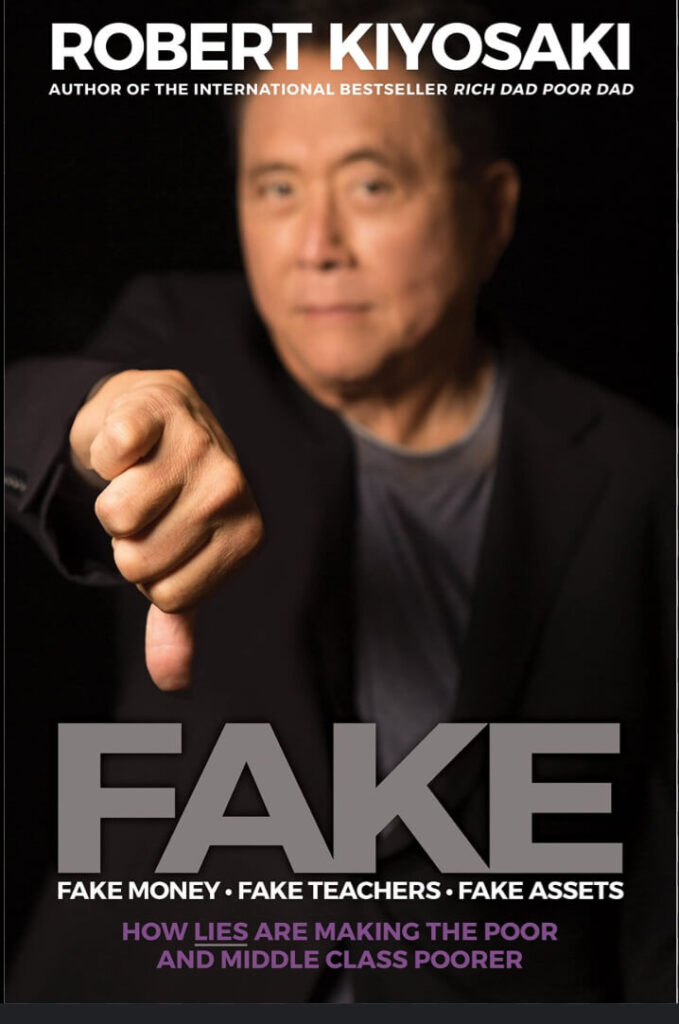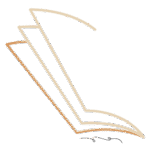Fake Outrage or Real Financial Awakening?
🎯 Introduction: The Rich Dad Rebrand into Conspiracy Finance
Fake: Fake Money, Fake Teachers, Fake Assets is Robert Kiyosaki’s loudest and most cynical book yet. If Rich Dad Poor Dad was a rebel yell against conventional wisdom, Fake is a full-blown declaration of war on the financial, educational, and political establishments. With this book, Kiyosaki doesn’t just question authority—he declares it illegitimate.
Touting a global financial collapse, condemning the Federal Reserve, and dragging traditional education through the mud, Fake is equal parts personal manifesto and financial prophecy. It’s also the most polarizing installment in Kiyosaki’s growing library: fiery, provocative, and deeply lacking in nuance.
If you thought Rich Dad Poor Dad leaned too heavily on storytelling, Fake dispenses with the parables almost entirely—and replaces them with full-throttle financial paranoia.
🧠 Core Philosophy: Everything You Know Is a Lie
The subtitle tells you everything: Fake Money, Fake Teachers, Fake Assets. Kiyosaki wants readers to believe that the systems they’ve been raised to trust—government-issued currency, formal education, traditional investing—are inherently broken, or worse, fraudulent.
Here’s his basic thesis:
⦁ Fake Money: Fiat currency is worthless; only gold, silver, and Bitcoin are “real” money.
⦁ Fake Teachers: Schoolteachers, professors, and most financial advisors aren’t financially successful, so they can’t teach you how to be.
⦁ Fake Assets: Stocks, mutual funds, and retirement accounts are tools of deception that enrich Wall Street and rob Main Street.
Kiyosaki’s worldview is rooted in distrust, and this book reflects it to the core. The problem? The diagnosis is often compelling, but the prescription is murky at best—and reckless at worst.
📦 What’s Inside: Rants, Riddles, and Real Warnings
Fake is split into three sections corresponding to its title’s three “fakes.” Throughout, Kiyosaki drops personal anecdotes, quotes from his ever-mysterious “Rich Dad,” and sweeping claims about global finance.
He discusses:
⦁ How the U.S. dollar lost its gold backing in 1971, turning it into “fake money.”
⦁ Why most schoolteachers aren’t qualified to teach about money.
⦁ How retirement plans like 401(k)s are scams built to benefit financial institutions.
These themes aren’t new—Kiyosaki has flirted with them before—but here they’re turned up to 11. In place of instruction or even metaphor, readers get warnings: about inflation, the collapse of the monetary system, and the need to “be your own bank.”
✅ What Some Readers Love
🔥 Radical Rethinking of Finance
For readers disillusioned with conventional systems—or those already steeped in alternative finance—Fake confirms suspicions they’ve long held. The idea that traditional systems benefit the elite resonates with many.
🪙 Bullish on Real Assets
Kiyosaki’s emphasis on hard assets (especially gold and Bitcoin) is timely. In an age of inflation concerns and digital disruption, his preference for “real” money makes intuitive sense to readers skeptical of fiat currency.
📣 Loud, Clear, and Unapologetic
If Kiyosaki’s earlier books hedged their provocations with parables, Fake says the quiet part loud. He’s blunt, unapologetic, and impassioned. For some readers, this level of conviction is refreshing.
❌ Where It Falls Apart
📉 Oversimplified Doom and Gloom
Kiyosaki’s worldview is binary: fiat is fake, Wall Street is a scam, education is useless, and only rebels survive. He never engages with nuance. He doesn’t acknowledge reforms, complexities, or the legitimate success many people have found within these systems.
🔎 Zero Practical Strategy
Once again, the book suffers from a lack of actionable guidance. Kiyosaki tells you to buy gold, silver, and crypto—but how much? When? How to store it? How to evaluate risk? None of this is explored. Readers are handed a crisis mindset without any map for navigation.
⚠️ Conspiratorial Overtones
There’s a growing trend of populist financial writing that flirts with conspiracy. Fake leans heavily into this: the idea that the system is rigged, the elites are hiding truths, and only by rejecting traditional finance can you be free. It’s less financial education than it is financial insurgency.
🎓 Repetitive Attacks on Education
Kiyosaki’s disdain for formal education reaches a new high (or low) in Fake. He criticizes teachers not for lacking financial literacy curricula—but for being broke. The implication is that success is the only credential that matters, which is a dangerous reduction of what it means to educate.
🔍 Critical Lens: Financial Literacy or Financial Fearmongering?
Where Rich Dad Poor Dad offered empowerment through a shift in thinking, Fake sometimes feels like it pushes fear over freedom. It urges you to abandon mainstream systems, but doesn’t offer the infrastructure to replace them.
Notably, Kiyosaki promotes:
⦁ Precious metals over savings accounts
⦁ Cryptocurrency over traditional investing
⦁ Entrepreneurship over employment
None of these are inherently bad ideas—but they require risk management, research, and real planning. Fake provides none of that. It urges readers to abandon the mainstream without giving them a stable bridge to cross.
There’s also a recurring suggestion that you should seek out Kiyosaki’s other products—courses, games, seminars—for further education. The book begins to feel less like a standalone resource and more like a sales pitch for the broader Rich Dad ecosystem.
🧮 Compared to Other Financial Books?
Compared to level-headed guides like The Little Book of Common Sense Investing (Bogle) or The Psychology of Money (Housel), Fake reads like a manifesto. Where those books offer timeless, principle-based strategies, Fake feels trapped in its moment—reactive, aggressive, and deeply ideological.
⦁ It lacks the rigor of The Millionaire Next Door
⦁ It offers none of the simplicity of Your Money or Your Life
⦁ It has more in common with YouTube financial doomsayers than respected economists
⭐ Final Verdict: ★★☆☆☆ (2/5)
Fake is Robert Kiyosaki’s boldest—and most unhinged—book to date. It trades education for agitation, strategy for slogans. While it asks valid questions about fiat currency, educational reform, and financial independence, it answers them with dogma rather than data.
For some, this book will feel like a wake-up call. For others, it will read like the financial version of shouting at the clouds. Either way, it demands a critical reader—one who can separate signal from noise, and truth from theatrics.
Who Should Read It:
⦁ Crypto enthusiasts, gold bugs, and anti-establishment thinkers
⦁ Readers burned by traditional financial systems
⦁ Fans of Kiyosaki who enjoy his contrarian style
Who Should Skip It:
⦁ Investors looking for evidence-based strategies
⦁ Educators or professionals seeking a nuanced discussion
⦁ Anyone not interested in financial apocalypse fan fiction




